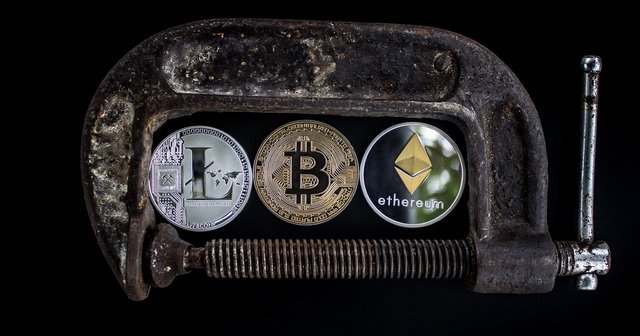Cryptocurrency: the Fintech disruptor

Blockchains, sidechains, mining – terminologies in the underground world of cryptocurrency accumulate in minutes. While it seems unreasonable to introduce new financial terms into an already complex financial world, cryptocurrencies offer a much-needed solution to one of the biggest troubles in today's money market – security transactions in a digital world.

Cryptocurrency is a defining and disruptive innovation in the rapidly changing world of fin technology, a relevant response to the need for a secure medium of exchange in the era of virtual transactions. In an era where transactions are just numbers and numbers, cryptocurrency offers to do just that!
In the most rudimentary form of the term, cryptocurrency is a proof of concept for an alternative virtual currency that promises secure anonymous transactions via an online peer-to-peer mesh network. The term improper is more a property than real money. Unlike ordinary money, cryptocurrency models work without a central authority, as a decentralized digital mechanism.

In a distributed cryptocurrency mechanism, money is issued, managed and approved by the peer network of the collective community – whose ongoing activity is known as mining on the machine of a peer. Successful miners also receive coins in recognition of their time and the resources used. Once used, transaction information is broadcast on a network blockchain under a public key, preventing each coin from being spent twice by the same user. The blockchain can be considered as the cash register. The coins are secured behind a password protected digital wallet representing the user.
The supply of coins in the digital currency world is predetermined, without manipulation, by any person, organization, government entity and financial institution. The cryptocurrency system is known for its speed, since transaction activities on digital wallets can materialize funds in minutes compared to the traditional banking system.
It is also largely irreversible by design, further reinforcing the idea of anonymity and eliminating any other chance of tracing the money back to its original owner. Unfortunately, the main features – speed, security and anonymity – have also made crypto-coins the transaction mode for many illegal exchanges.
Just like the money market in the real world, exchange rates fluctuate in the digital coin ecosystem. Because of the finite quantity of coins, as the demand for money increases, the coins swell in value. Bitcoin is the largest and most successful cryptocurrency to date, with a market capitalization of $ 15.3 billion, capturing 37.6% of the market and currently priced at $ 8,997.31. Bitcoin hit the currency market in December 2017, trading at $ 19,783.21 per coin, before facing the sudden drop in 2018. The fall is partly due to the rise in alternative digital coins. such as Ethereum, NPCcoin, Ripple, EOS, Litecoin and MintChip.
Due to hard-coded limits on their supply, cryptocurrencies are considered to follow the same economic principles as gold – the price is determined by limited supply and fluctuations in demand. With the constant fluctuations in exchange rates, their sustainability remains to be seen. Therefore, investing in virtual currencies is more speculation at the moment than an ordinary money market.
In the aftermath of the industrial revolution, this digital currency is an essential element of technological breakthrough. From the point of view of an occasional observer, this climb can seem exciting, threatening and mysterious at the same time. While some economists remain skeptical, others see it as a meteoric revolution in the money industry. Conservatively, digital coins will move around a quarter of national currencies in developed countries by 2030.
This has already created a new asset class alongside the traditional global economy and a new investment vehicle package will come from cryptofinance in the coming years. Recently, Bitcoin may have dived to highlight other cryptocurrencies. But that does not signal a crash of the cryptocurrency itself. While some financial advisers emphasize the role of governments in cracking down on the underground world to regulate the central governance mechanism, others insist on continuing the current free movement.

The more popular cryptocurrencies are, the more they are monitored and regulated – a common paradox that disrupts the digital note and erodes the main purpose of its existence. Either way, the lack of middlemen and oversight makes it remarkably attractive to investors and drastically changes daily trading. Even the International Monetary Fund (IMF) is concerned that cryptocurrencies will displace central banks and international banks in the near future. After 2030, regular trade will be dominated by the crypto supply chain which will offer less friction and more economic value between technologically adept buyers and sellers.
If cryptocurrency aspires to become an essential part of the existing financial system, it will have to meet very divergent financial, regulatory and societal criteria. It will have to be pirate-proof, consumer-friendly and highly protected to deliver its fundamental benefits to the traditional monetary system.

It should preserve user anonymity without being a channel for money laundering, tax evasion and internet fraud. As these are must-haves for the digital system, it will take a few more years to understand whether the cryptocurrency will be able to compete with the real currency of the world. While it is likely to happen, the success (or lack thereof) of cryptocurrency in meeting the challenges will determine the fortunes of the monetary system in the days to come.
Pic1 Pic1 Pic1 Pic1Posted from my blog with SteemPress : https://gogona.000webhostapp.com/2020/02/cryptocurrency-the-fintech-disruptor